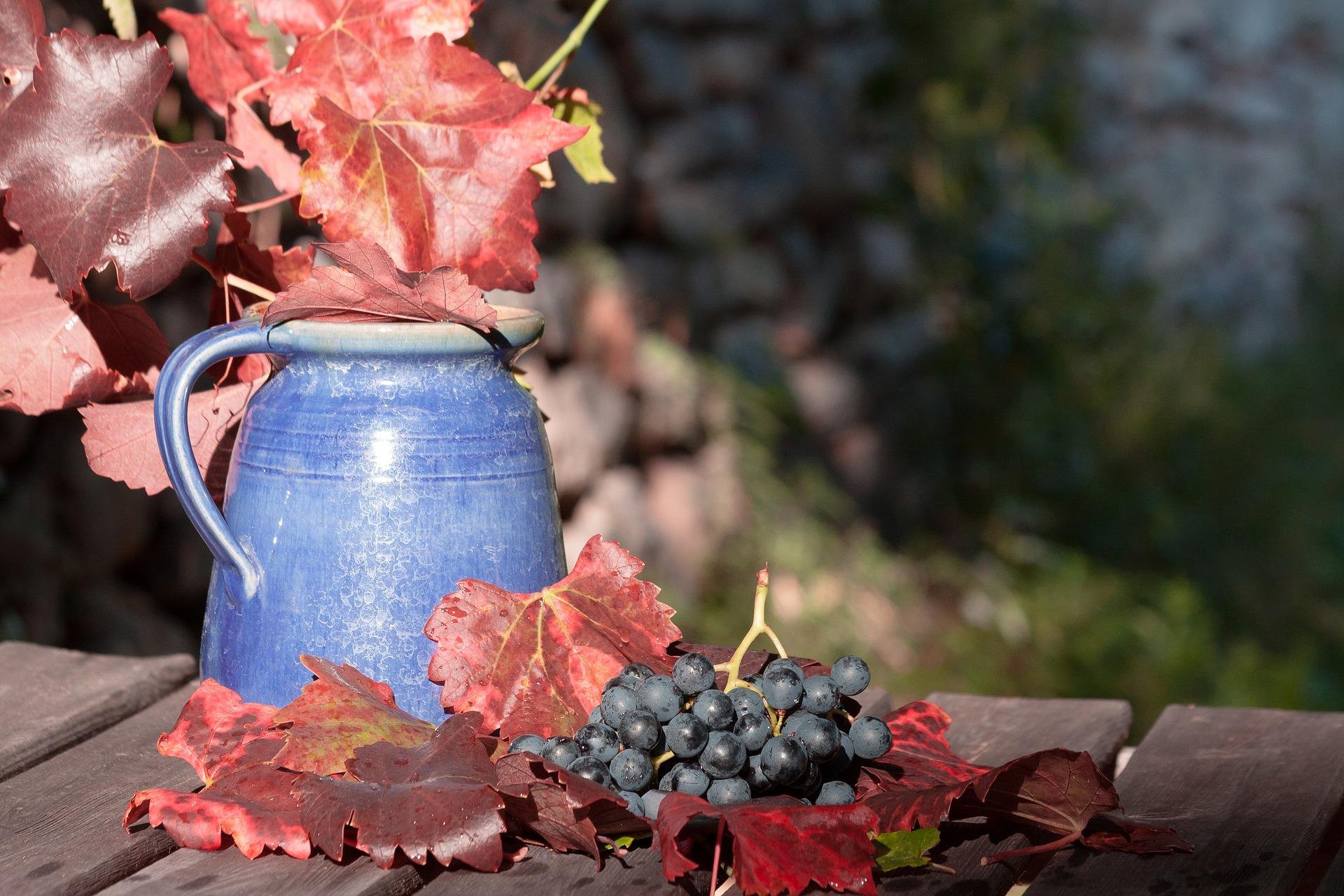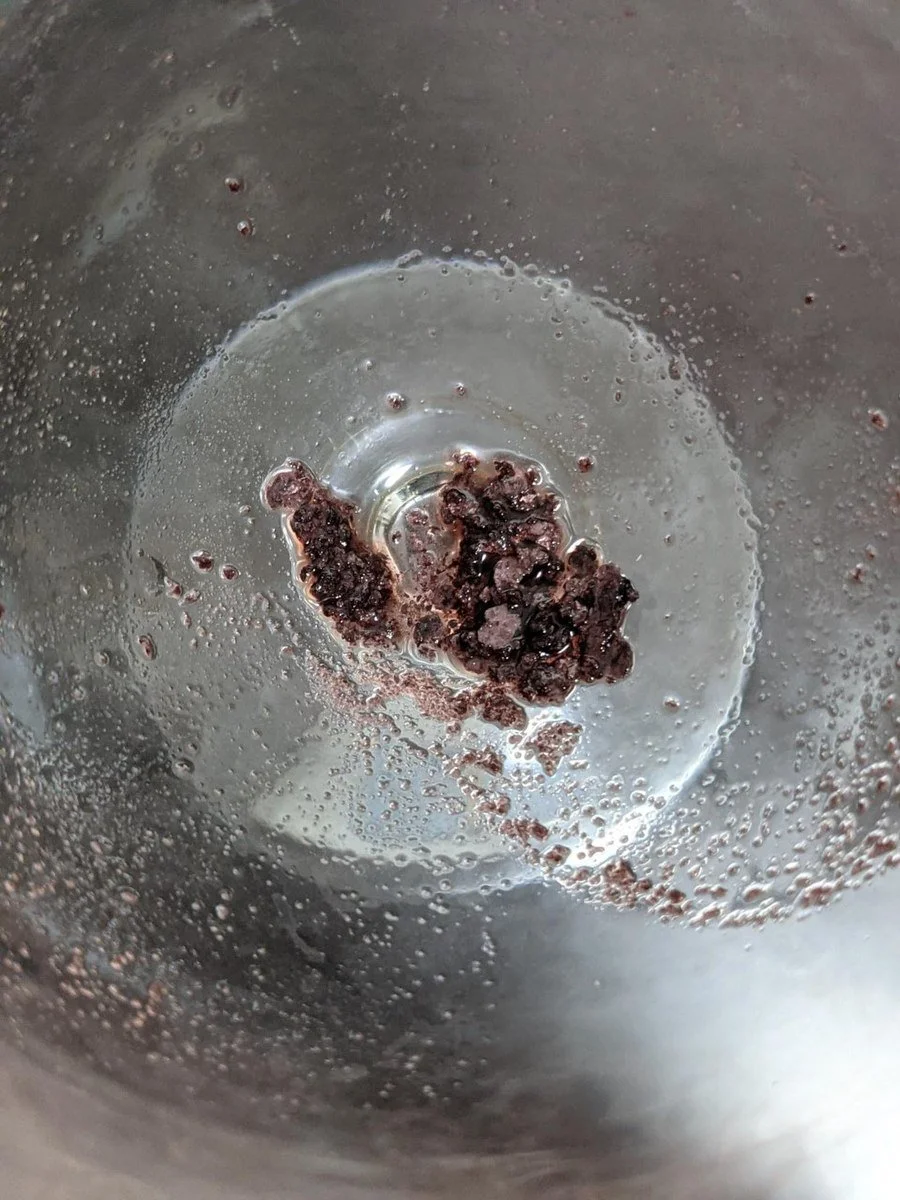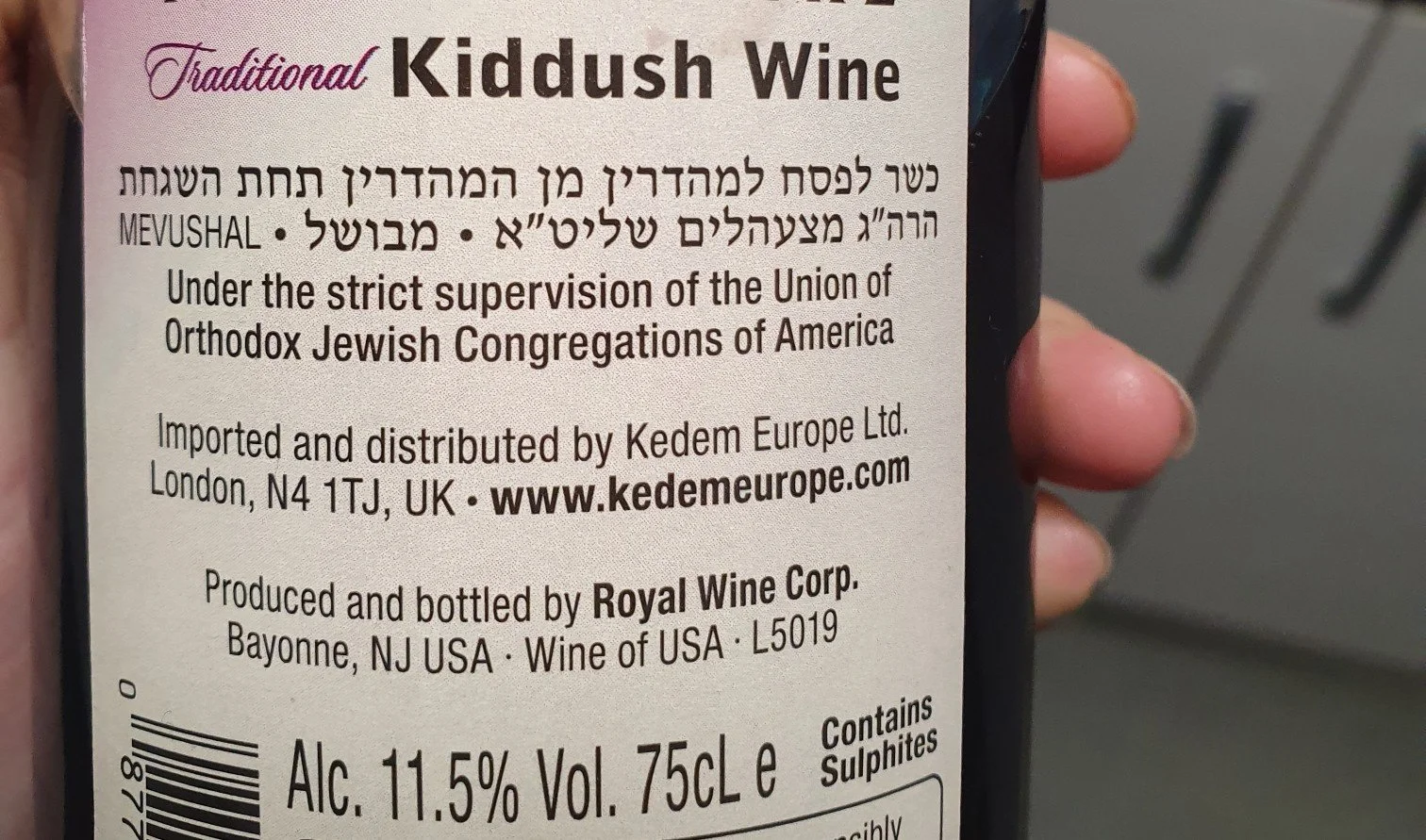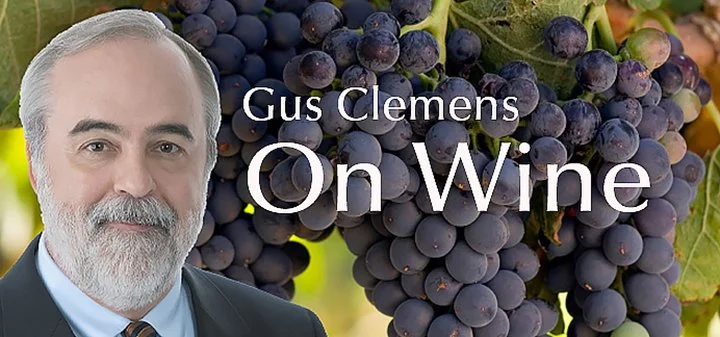Fruit of the Vine
Wine columnist Gus Clemens offers notes on sacramental/altar and kosher, mevushal wines
Photo: Stefan Schweihofer
In honor of wine-harvest season, HTI Open Plaza has compiled a series of posts by wine columnist Gus Clemens that appear on his blog Gus Clemens On Wine. Our feature includes his four-part series on sacramental wine (July and August of 2011) and his post on Kosher, mevushal wine (June 2020), along with an original Author’s Note by Clemens and images curated by Open Plaza.
AUTHOR’S NOTE
It is nice to see the sacramental wine material written 11 years ago still has legs.
At the time, it resulted in me presenting lectures—including sacramental wine tasting—to my home church study group.
Indulge me with one story:
A woman contacted me after the series and asked if she could obtain the sacramental wine used at Holy Angels (my home church) for her dying father who always enjoyed the communion wine.
I told her I did not think so, but I would check.
I called Mont La Salle and spoke to the owner, whom I had interviewed via phone for the column. I related the purpose of my call and gave her the woman’s address.
She told me she could not sell to her. California is the only state that allows non-church sales of their wine. Before we parted, however, she said: “But sometimes miracles happen."
A week or so passed.
The woman contacted me. She had received two bottles of the Mont La Salle Angelica wine. Her father was energized and more connected with the world than he had been in months.
He passed shortly after that, but it was nice to be a small part of “sometimes miracles happen.”
—Gus Clemens, 2022
While wine is enjoyed as a beverage and a food by billions every day, it also is an integral part of religious worship. Roman Catholics include wine in every celebration of the Mass. Although viewed differently from a theological point of view, Episcopalians and Lutherans include wine in their services. Jews use kosher wine in such celebrations as Passover.
Quality
Can you use “just any old wine” on the altar? Heavens, no. There are strict rules governing “fruit of the vine and work of human hands.”
According to Catholic canon law, sacramental “wine must be natural, made from grapes of the vine, and not corrupt” (Code of Canon Law 924:3).
There can be fevered discussion about what “not corrupt” means. Does adding sulfites to preserve wine constitute corruption? Generally, no—sulfites occur naturally in all wine. But what about adding more? Without sulfites, white wines in particular have short shelf life, turn brown and bad. That is a real problem for altar wines because they often are stored up to a year. Blessed be sulfites.
How about adding spirit alcohol to prevent souring or spoilage? Add away as long as the spirit was distilled from grapes (grape brandy), it is added during fermentation, and the alcohol level of the final product does not exceed 18 percent. Peace be with you, and with your spirit.
Other additives, such as water, juice not from grapes, sugar to boost alcohol during fermentation, alcohol to boost alcohol after fermentation, and anything else? For God’s sake, don’t even think about it.
Red, white, rosé/rosato? All acceptable styles. Hallelujah.
Makers? Two California companies dominate, with more than 90 percent of business. We’ll meet them and others in the section below.
Unless you are a priest or a church, you cannot purchase sacramental wine, so no recommendations here. The section below, however, includes tasting notes on wines used by Catholic churches in the Texas area.
General Notes
Sacramental wine is different from consumer wine. Different labeling. Different licensing for makers. Different federal and state taxes. That is why wine shops and liquor stores cannot carry the product, and why altar wine is not sold to the public even by makers.
The general public can buy wine made to altar wine standards—natural wine made only from grapes, with no additional ingredients—but those will be labeled and taxed as a general consumer product. Typically, labels on such wine will read something like: “Approved for altar use.”
High alcohol is not required of altar wine. This misconception flows from the popularity of Angelica-style wine, the best-selling altar wine in the U.S.
• Angelica, made by both Mont La Salle and Cribari, is 18 percent alcohol, the highest permitted by Catholic canon law. Angelica is popular because it tastes fruity and sweet, and because high alcohol is a preservative, an important consideration since many churches purchase their wine supply only once or twice a year.
• High alcohol also serves as a sanitizer, which is important, since Catholic Eucharist is taken from a common cup. Studies, in fact, show very little transmission of sickness via the shared communion cup.
All types and colors of wine are used on the altar, from dark-red wines, such as Mont La Salle Concord, to reddish-pink wines, such as Rosato (made by Mont La Salle and Cribari), to pale white, such as Cribari Chablis. These examples, by the way, are all 12 percent alcohol, not 18 percent.
Sacramental wine production was permitted during Prohibition. Sacramental wine sales increased from two million gallons to almost three million gallons in the first two years of Prohibition. This was probably not caused by an increased number of Catholic Mass services.
Crystals in the Chalice
Sediment of a Bordeaux 2011 wine opened in 2021, with crystals of tartaric acid visible in the glass. Photo: Capsellanaut
What’s this stuff in the communion cup/Bordeaux glass?
What are the little white crystals or flakes in the wine?
Natural grape tartrates crystallize in wine when it is stored too long or at too cold a temperature. In white wines, they are called “wine crystals” or “wine diamonds.” They are more likely to be visible in white wines but are more likely to occur in quality red wines (which typically are not used for altar wines).
The crystals often form in consumer red wines made old-style—no cold fermentation or filtration. In those cases, the crystals are usually signs of quality. The crystals are harmless. They can be removed by pouring wine through a coffee filter, but the best solution is to store wine properly: at a consistent temperature between 55 and 70 degrees. Celebrate the crystals when you decant an old, expensive, non-altar wine from your cellar.
What are these grains of dark stuff in the wine? This sediment is composed of tannins and other solid matter that form in the wine as it ages. They occur in red wines, particularly bottlings aged eight years or more. For quality consumer wines, this is a positive sign and can mean the wine has promise of character and complexity.
Sediment also is caused by storing wine in a hot environment for too long, and, in this case, it is not a good thing. While sediment is not harmful, in altar wine it usually signals that the wine is past its prime.
Why is this white wine brown? It is past its prime; forces of light and time have triumphed over the preservation forces of sulfites. This is a serious flaw. The wine can still be consumed—it won’t harm you, but it will taste old. When the wine is brown, whether you are a priest or just a regular wine drinker, find the drain and pour it down. The higher alcohol of wines, such as Angelica-style (18 percent), tends to prevent this browning from happening.
Sacramental wine makers
Sacramental wine makers are our nation’s oldest wine makers because they were not put out of business by the lunacy of Prohibition. By the 21st century, however, there are only three makers of consequence. Two California companies dominate, accounting for 90 percent of U.S. sacramental sales: Mont La Salle Altar Wines and Cribari Premium Altar Wines.
Mont La Salle, Napa, CA. Originally part of Christian Brothers, a Catholic religious community, Mont La Salle became a not-for-profit company after the brothers decided to get out of the alcohol business in the late 1980s.
Cribari Premium Altar Wines, Fresno, CA. Cribari’s roots trace to the 19th century, their altar wine production to 1917. Cribari produced consumer wines until 1991, when it sold its consumer division to Constellation Brands, the world’s largest wine company. The Cribaris kept the sacramental division for the family, and fifth-generation Cribaris operate the winery today.
O-Neh-Da Vineyard, Conesus, NY (O•Nehw•Da Vineyard). Founded in 1872 in New York State by Catholic Bishop Bernard McQuaid, O-Neh-Da Vineyard is the oldest wine producer still in its original location. O-Neh-Da does not sell west of the Mississippi; their principal market is New York and Pennsylvania.
All three companies make a variety of wines, from dark red to pale gold. Typical alcohol content is either 18 or 12 percent, but there is a minimum alcohol (0.5 percent) wine (Mustum). High-alcohol Angelica is a best seller for the reasons mentioned earlier.
Because of taxes, laws, and other rules, the general consumer cannot buy sacramental wines.
O·Neh·Da Vineyard © 2022 Onehda Sacramental Wine
Kosher, mevushal wine
You may notice some wines announce they are kosher, sometimes, kosher mevushal. What does that mean?Kosher is Yiddish for “proper” or “fit.” Kosher wine only contains kosher ingredients. Once grapes are picked, only Shabbat-observant Jews can be involved in making the wine. Wine-making equipment must be rabbinically certified.
Kosher wine is made same way as non-kosher wine, but without some ingredients some winemakers use. Sacramental wine used in the Catholic church has the same ingredient rules as kosher wine.
Kosher wine does not automatically mean better wine. Some kosher wine is very sweet—Manischewitz is a leading brand—and appeals to a limited group. But there are very many wines you would not know are kosher unless it’s told on the label.
Many wine brands follow kosher ingredient rules because they think it makes for better, less manipulated wine. Most wines you buy have zero non-kosher ingredients, but they are not made by Jews, or the making is supervised by a rabbi. So, no kosher indication is on the label.
Kosher mevushal (Hebrew for “cooked” or “boiled”) wine is another story. While some mevushal wine is tasty, that is not the point. Kashrut law (Jewish dietary law) specifies that wine cannot be kosher if it might have been used for idolatry—poured on an idol, touched by an idolater—or made by a non-Jew.
When kosher wine is cooked/boiled it becomes unfit for idolatrous use and maintains its kosher status even if touched by an idolater. Mevushal wine often is used in kosher restaurants so that it can be handled by non-Jews. It also is appropriate for Passover meals, when dietary rules are the most strict.
Cooking/boiling wine changes wine–and not for the better. In recent times, kosher wineries have perfected “flash pasteurization,” which rapidly heats the wine, then immediately chills it. That process—which takes about a minute—minimizes altering of wine flavor while satisfying mevushal rules.
Last round: Jewish rabbi, Catholic priest, Protestant minister walk into a wine bar. The bartender says, “What? Is this a joke?”
Royal Wine Corp. Kiddush Wine Malaga. Photo: Open Food Facts
Tasting Notes
Catholic
Below are tasting notes on some California sacramental wines used by Catholic churches in the San Angelo, Texas area.
Mont La Salle Angelica. Pale gold, fruity, rich bouquet; 18 percent alcohol. Cathedral Church of the Sacred Heart, Holy Angels, St. Mary Star of the Sea (Ballinger, TX).
Mont La Salle Concord. Dark purple, medium-sweet; 12% alcohol. St. Mary’s Catholic Church (San Angelo, TX).
Mont La Salle Rosato. Deep rose color, sweet, mellow; 12% alcohol. St. Joseph (Rowena, TX).
Cribari Light Red. Dark pink, lightly sweet; 12 percent alcohol. St. Joseph’s (San Angelo, TX).
Cribari Rosato. Delicate, sweet, pink; 12% alcohol. St. Therese (Carlsbad, TX), St. Margaret of Scotland (San Angelo, TX).
Cribari Tokay. Red amber, medium-sweet; 18% alcohol. St. Ambrose/Holy Family (Wall, TX).
Kosher
Below are tasting notes on some kosher wines from Israel, along with links to my reviews.
Segal’s Fusion Dry Red Wine, Upper Galilee 2017: Simple, tasty, no fuss libation. $14 Link to my review
Galil Mountain Winery Blanc de Noir, Galilee 2018: Exotic. Adventuresome wine drinkers give this a try. $19-22
Link to my reviewJacques Capsouto Cotes de Galilee Village Cuvee Eva Rosé 2017: Fresh, very easy drinker in Provence style. $20 Link to my review
Golan Heights Winery Yarden Petit Verdot Galilee 2016: Replete with dark fruit, tannin, and power. Very expressive of petit verdot. $32-39 Link to my review
MORE
Rolando and Lorena Herrera’s Mi Sueño Winery Cabernet Sauvignon, Napa Valley 2016
Gus Clemens on Wine, 4 April 2021




